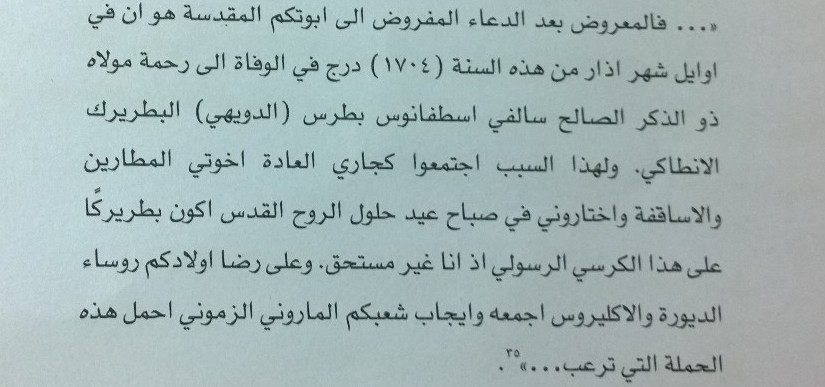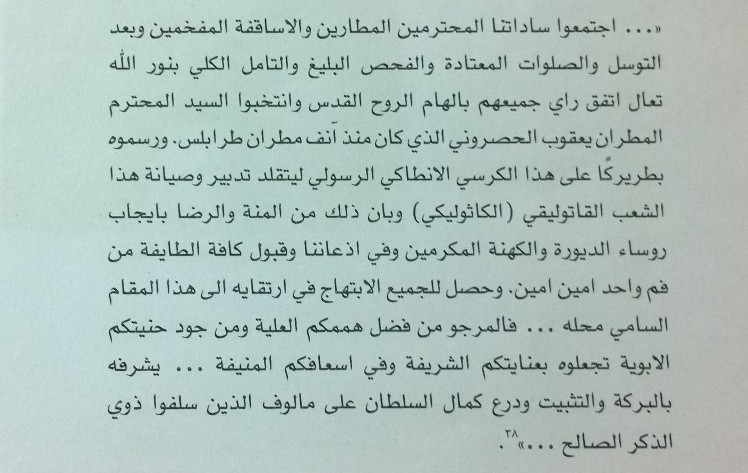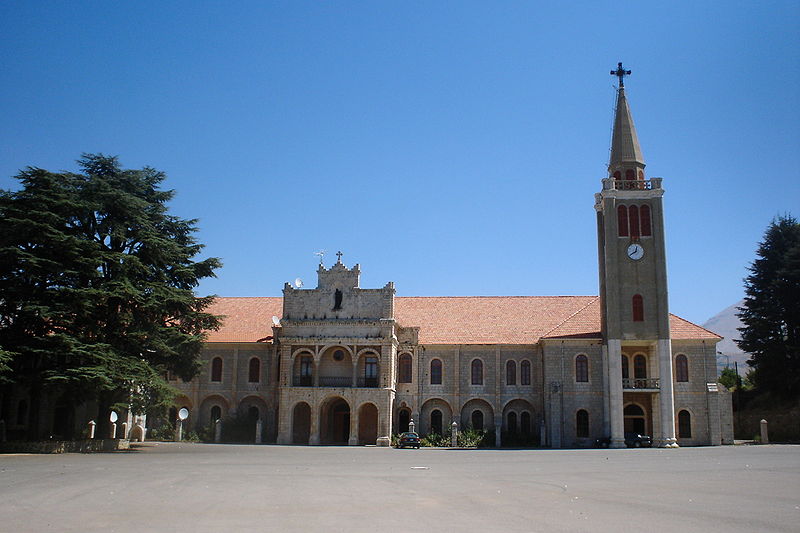Maronite Patriarch Summer Residence in Diman
Before the 18th century, the Maronite Patriarchate in Mount Lebanon was subjected to the rule of Tripoli’s governors, a reality which forced the Patriarchs to seek protection by migrating towards the district of Kerserwan, where the Khazens were in power. At the time, the Khazens had vowed to protect the Church and its Patriarches from the injustice of the Ottoman rule and by doing so, forged and led the Maronite political line at the time in parallel with the Maronite Church and its clergy’s path. The Khazens were involved in every aspect of the Maronite Church, whether organizational or spiritial or managerial. The Khazens’ ever growing influence, along with the Hbeich and Dahdah Cheikhs and other influential Maronite families, gave them a rightful and important role in the electoral process inside the Church and the Maronite Church’s congregations and organizational matters in relation with the Holy Synod in Rome.
The Electoral Process and the Cheikhs’ privileges before the Maronite Synod
Before the Maronite Synod of 1736, and every time the Maronite bishops and priests woud elect of the bishops to become Patriarch, the elected Patriarch, along with the Bishops, the Priests and Cheikhs would dispatch letters to the Holy Synod in Rome in order to seek the papal blessing. When Bishop Gebrael Al Balouzani was elected in 1704 as Patriarch, he seeked the apostolic blessing shield by a book from Pope Clement XI (1700-1721):
Here’s the original letter that he sent:

Added to that, the Maronite Bishops and Cheikhs would also write to the Pope to express their consentment over the electoral process and to seek the papal blessing and his endorsement for the elected Patriarch on the Antioch Chair.
Here’s one of the original letters sent:

In the next part, we will discuss the major changes that came after the Lebanese Synod took place as well as the role of the Khazens in the appointment of Maronite Bishops.




